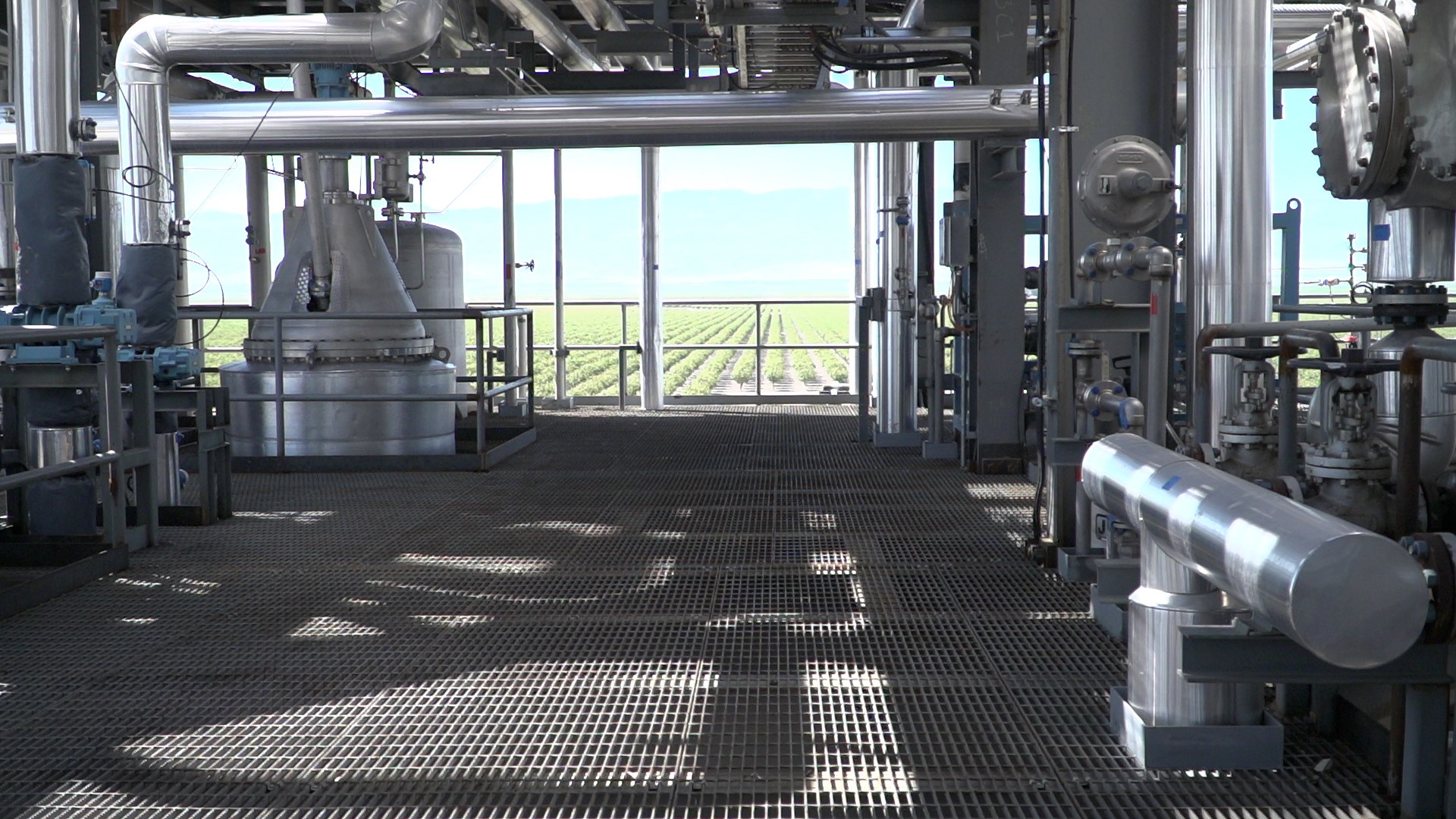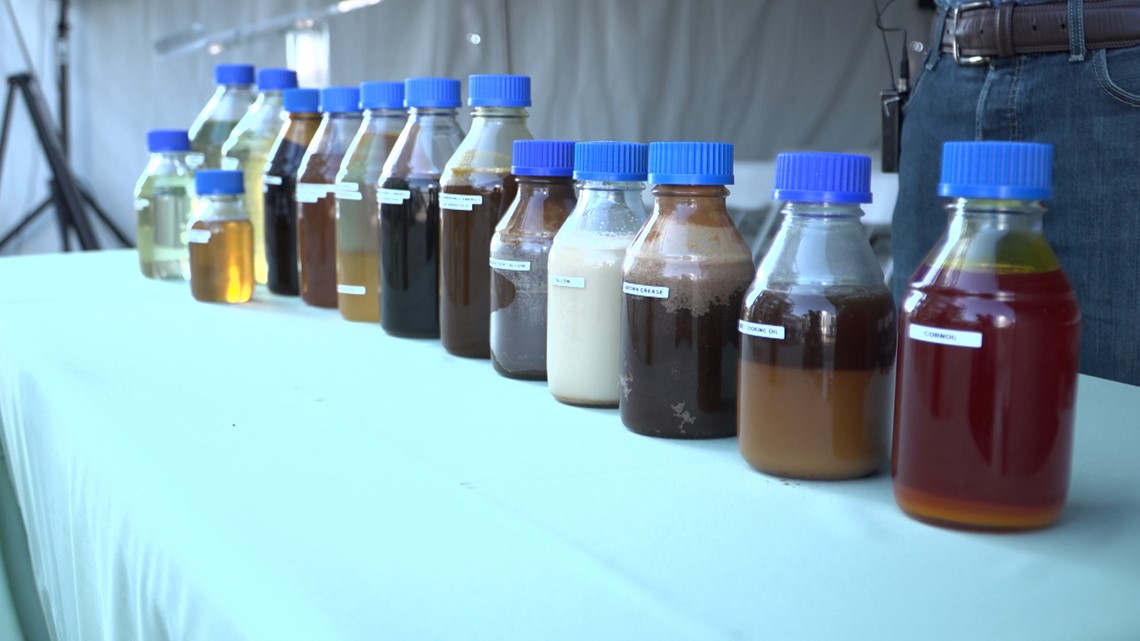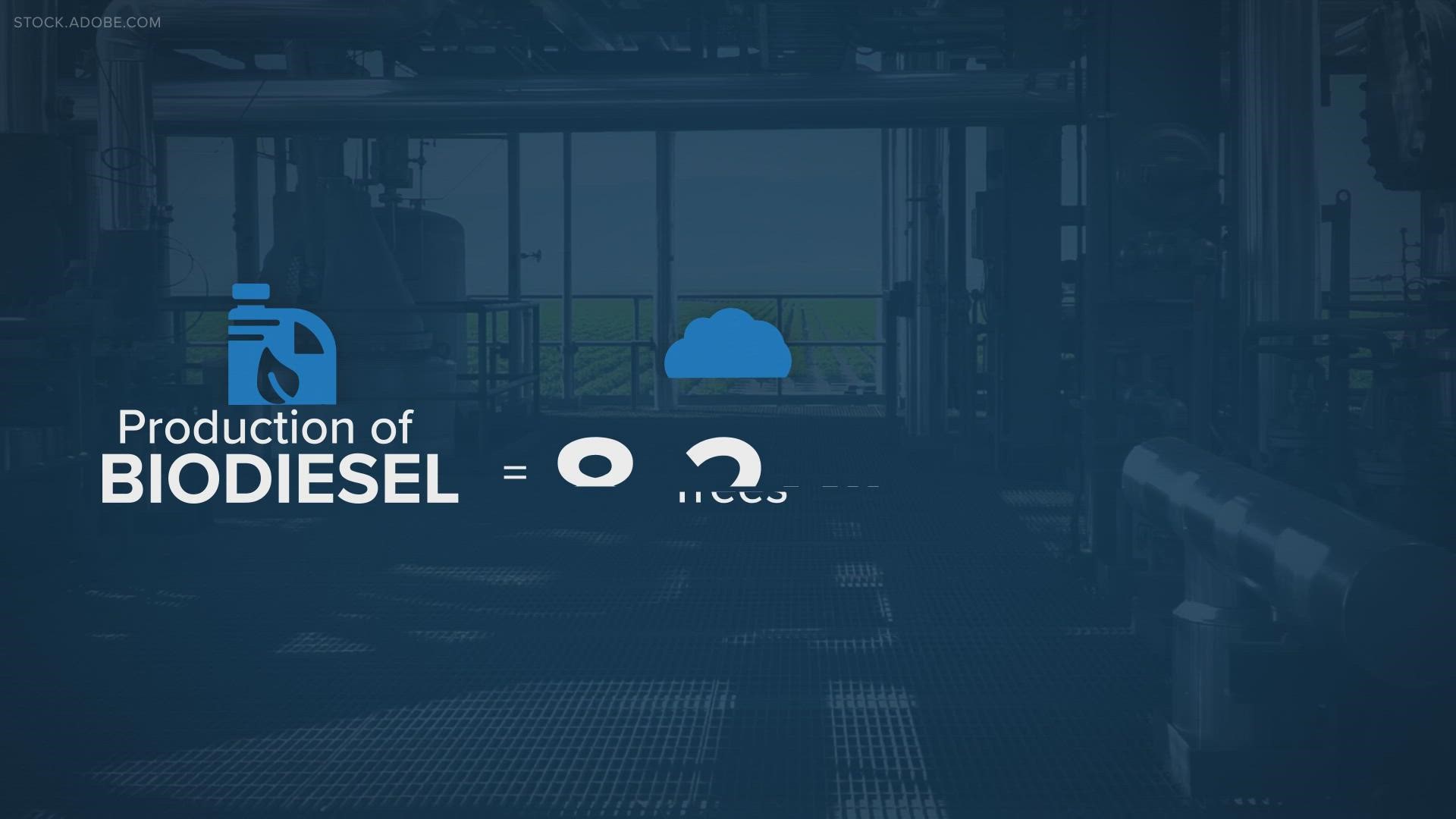Farm to fuel tank: How used cooking oil is fueling biodiesel
ABC10's Alex Bell shares how Crimson Renewable Energy collects used cooking oil from restaurants and turns it into biodiesel.
ABC10

Video Meet the people who make it all happen
Article Find out how cooking oil is turned in into biodiesel
Cooking oil is essential in restaurants’ kitchens, but the oil does more than just fill our bellies with greasy goodness. It’s also being used to help our environment in a farm-to-fuel tank kind of way.
Jane Connors, general manager of the San Francisco Ferry Building told ABC10 that popular spots like Hog Island Oyster Co. are trying to be sustainable and practice what the Ferry Building preaches.
"The building is about celebrating local flavors. And you know, it has such a history and farming and farming traditions in those local flavors. I think the stewardship of realizing you, in order to perpetuate just the abundance of the Bay Area, you have to take care of it," Connors said.
And that’s where Crimson Renewable Energy comes in. They collect used cooking oil from places like the Ferry Building and turn it into biodiesel according to Tyson Keever, Crimson's chief operating officer.
"Biodiesel is a pour-and-go technology. You can take a gallon straight from this plant and put it right in a diesel vehicle and drive away," Keever said.
So, how does Crimson take used cooking oil and turn it into useable biodiesel?
"Each restaurant is bringing their gallons of used cooking oil to one place in our building and our loading dock area. They're putting the cooking oil there. So those six businesses every day are bringing in gallons and gallons," Connors said.
Crimson drivers collect oil in trucks where it then gets transported to their plant hours away in Bakersfield.
"We take that cooking oil from restaurants and convert it to biodiesel. Which you can use in your diesel truck or in your home heating oil furnace, or in heavy trucks going up and down the freeway," Keever said.
Harry Simpson is the CEO of Crimson Renewable Energy.
"Our mantra is collect, refine, refuel, so we're collecting used cooking oil up and down California," he said.
Simpson started Crimson almost 15 years ago to do something he believed in. Now, Crimson is the largest producer of biodiesel in the state of California.
They work with clients like Chase Center, home of the Golden State Warriors, Sierra Nevada Brewing, and businesses like Buffalo Wild Wings, Outback Steakhouse, and Chipotle in Sacramento.
"The carbon reduction for what we do here is in the realm of 85 to 90%, lower than petroleum diesel," Simpson said.
Simply put, it's cleaner tailpipe emissions.
Simpson said that Crimson’s production of biodiesel is like planting, "8.2 million trees or taking 108,000 cars off the road. The other good thing about biodiesel is that it burns cleaner. Specifically, it reduces particulate matter emissions compared to petroleum diesel. So the particulate matter emissions in especially PM5 and PM10. That's what gives people respiratory illness. So, I think the volume of fuel that we produce as a company results in the reduction, for instance, asthma in terms of 1,000's of cases a year."
According to Simpson, the market in California for clean-burning low carbon fuels has really stepped up over the last decade. Crimson even expanded its Bakersfield location.
Keever shared that the latest plant addition is a new technology that can take more "distressed feedstocks recycled cooking oil or real challenge oil from grease traps and other waste streams and repurpose it to biodiesel."
Crimson now has two locations, Bakersfield and Oregon. Between both plants, they have the capacity to pump out about 50 million gallons of biodiesel annually.
"This plant is a state-of-the-art plant, you know, sort of the most current generation. It utilizes a technology that's only been built at two other plants in Europe. This is the first of its kind in the United States," Simpson said.
They have a secret sauce when it comes to turning that cooking oil into biodiesel so they couldn’t share the exact ingredients but for those of us who aren’t chemical engineers, Keever said this is how they break it down to a useable product.
"You can make biodiesel from all sorts of fats, oils, and greases. Think of any canola oil you have on the shelf in your kitchen. That's the base feedstock we're using to make biodiesel. In order for it to be reactor ready, I'll call it — we want to remove impurities because we're using recycled strings from restaurants," Keever said."So, it'll have french fries in it and we'll have chicken wing batter and other sorts. So, we're going to filter it and we're going to dewater it and get lots of the impurities out then we have reactor-ready oil and that's similar to what you have in your in your kitchen right now on the shelf here, canola cooking oil."
After adding some methanol, a catalyst, heat and a few other things Keever said "it will separate. We're going to have biodiesel, which is a methyl ester. About nine parts will be methyl ester and one part will be glycerin. The biodiesel is then polished a little bit further and it's ready to go to market and be used in any diesel engine. That glycerin fraction is sold to a whole bunch of different uses. It'll go to propylene glycol is going go to airplane deicers it will go to gel tabs and pharmaceuticals and a whole bunch of different emerging uses. We really focus here and taking these two products and get into their highest and best use."


By far the biggest use of their biodiesel goes to truck stops. Simpson said you would be hard-pressed in California to find a truck stop that doesn't have 20% biodiesel.
"The biodiesel that leaves here typically gets blended with petroleum diesel and consume that a 20% biodiesel 80% petroleum diesel blend rate," Simpson said.
California's economy is also benefiting from this fuel. The economic impact is something Crimson is proud to keep local.
"The economic model for what we do is, is quite different than what people may be used to with like a major oil refinery, where they're bringing crude oil from all over the world, from the Middle East, or Venezuela," Simpson said.
Keever told ABC10 that it keeps dollars revolving in the local economy.
"With jobs from people collecting the cooking oil processing that cooking oil, bringing it to the biodiesel plant, and then converting from here and selling it and using it here," Keever said.
Simpson's dreams are to continue to grow the company and improve the environment in a renewable way.
"There's a recognition that we've got to start transitioning, you know, and I don't think there's any one single thing that is going to be the magic silver bullet. It's facilities like this, bringing new, clean-burning renewable liquid fuels, there's electric vehicles, that's converting the grid to solar and wind, we need advances in battery storage technology to make that viable," Simpson said.
For places like the Ferry Building, Connors said that the choices they make today shape their tomorrow.
"It just reinforces what we're doing here in terms of the sustainability and working with local businesses," Connors said. "Making sure we're stewards of the traditions of farming, local producers, and making sure that the land and environment we're going to leave is, is for all generations, not just what we're doing here today in the Ferry Building, but it's going to be shoppers of tomorrow. It's going to be the chefs of tomorrow. They're going to benefit from the decisions and practices we're doing today."



















